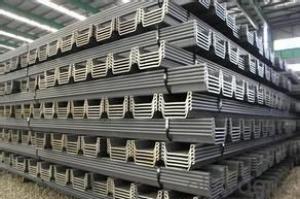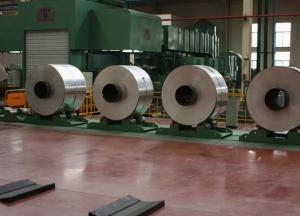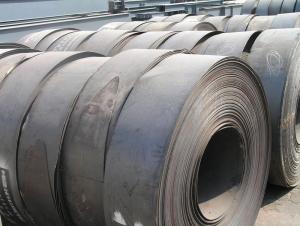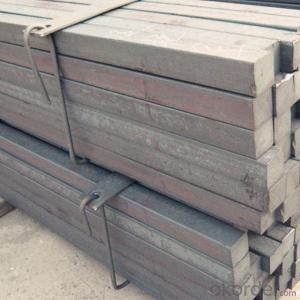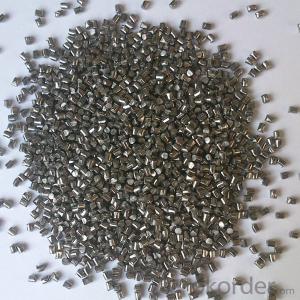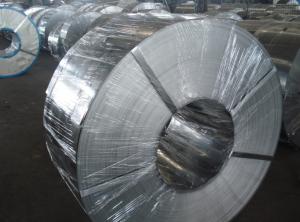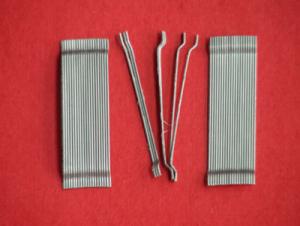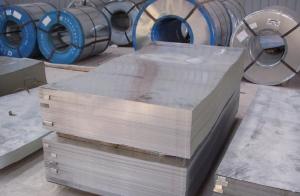Steel Tubular Pile 800mm
- Loading Port:
- China Main Port
- Payment Terms:
- TT OR LC
- Min Order Qty:
- -
- Supply Capability:
- -
OKorder Service Pledge
Quality Product, Order Online Tracking, Timely Delivery
OKorder Financial Service
Credit Rating, Credit Services, Credit Purchasing
You Might Also Like
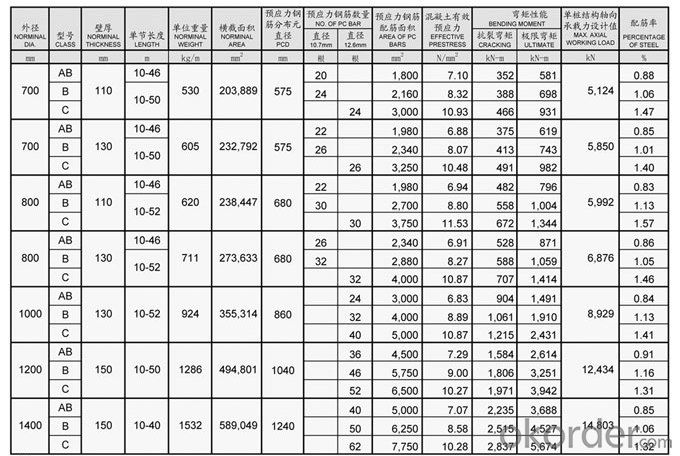
- Q:What are the different types of steel tubes and their uses?
- There are several types of steel tubes, including seamless, welded, and ERW (Electric Resistance Welded) tubes. Seamless tubes are made without any welding or joints and are used in high-pressure applications like oil and gas pipelines. Welded tubes are manufactured by bending and welding steel plates or strips and are commonly used in construction, automotive, and furniture industries. ERW tubes are made by passing a high-frequency current through the metal, producing a welded seam, and are used in structural and mechanical applications. Furthermore, there are specialized types of steel tubes such as square, rectangular, and round tubes, each serving specific purposes in various industries.
- Q:How does steel pipe threading for plumbing applications work?
- Steel pipe threading for plumbing applications involves the process of cutting threads into the ends of steel pipes to create a tight and secure connection. This is typically done using a pipe threading machine that rotates the pipe while a cutting die is pressed against it, removing the material to form the threads. The threads on the pipes are usually tapered to ensure a tight seal when joined with fittings or other pipes. This method allows for easy installation and disassembly of plumbing systems, providing a reliable and leak-free connection.
- Q:How do steel products contribute to the healthcare and medical industry?
- Steel products contribute to the healthcare and medical industry in various ways. Firstly, stainless steel is widely used in the production of medical equipment and surgical instruments due to its durability, corrosion resistance, and ease of sterilization. From scalpels and forceps to prosthetics and implants, steel ensures the reliability and hygiene of these critical tools. Additionally, steel is used in the construction of healthcare facilities, providing strength, stability, and fire resistance. Furthermore, steel is also used in medical storage systems such as cabinets and shelves, ensuring efficient organization and safety of medical supplies. Overall, steel products play a vital role in maintaining the quality, safety, and functionality of healthcare and medical services.
- Q:What are the advantages of using stainless steel in the food and beverage industry?
- One of the main advantages of using stainless steel in the food and beverage industry is its excellent resistance to corrosion. This means that stainless steel equipment and surfaces are less likely to rust, stain, or corrode when exposed to various substances commonly found in the industry, such as water, acids, and food ingredients. Additionally, stainless steel is easy to clean and maintain, as it is non-porous and does not absorb dirt, bacteria, or odors. This makes it a hygienic choice for food processing and handling. Moreover, stainless steel is durable and can withstand high temperatures and mechanical stress, making it suitable for a wide range of food and beverage applications.
- Q:What are the different types of steel bolts and their uses?
- There are various types of steel bolts, each designed for specific applications. Some common types include hex bolts, carriage bolts, anchor bolts, and eye bolts. Hex bolts are the most versatile and widely used, typically for general fastening purposes. Carriage bolts have a round head and are commonly used in wood-to-wood connections. Anchor bolts are used to secure structures to concrete or masonry. Eye bolts have a looped head and are ideal for lifting heavy objects. The choice of bolt depends on the specific requirements of the project and the type of materials being fastened.
- Q:How do steel products contribute to the automotive aftermarket industry?
- Steel products contribute to the automotive aftermarket industry by providing essential components for vehicle repair and customization. From replacement parts like chassis frames and exhaust systems to accessories like grilles and bumpers, steel products are integral to maintaining and upgrading vehicles. Their strength, durability, and versatility make steel an ideal material for manufacturing aftermarket components, ensuring the safety, performance, and aesthetic appeal of vehicles.
- Q:What are the different types of steel rails and their applications?
- There are several types of steel rails commonly used in various applications. Some of the most common types include: 1. Light rails: These rails are typically used in light-duty applications, such as tramways, narrow gauge railways, or temporary tracks. They are relatively lightweight and offer flexibility for installation and maintenance. 2. Heavy rails: Heavy rails are designed for high-load applications, such as mainline railways or heavy industrial tracks. They are more robust and can withstand heavy traffic and large loads over long distances. 3. Crane rails: These rails are specifically designed for crane tracks and overhead cranes. They are constructed to handle the dynamic loads and stresses imposed by cranes, ensuring smooth movement and stability. 4. Grooved rails: Grooved rails are commonly used in urban transit systems, such as trams or light rail vehicles. They have a groove along the top surface that guides the wheels, providing additional stability and preventing derailments. 5. Flat-bottomed rails: These rails are widely used in standard railway tracks. They have a flat base that rests on the sleepers, providing stability and support for heavy trains. Flat-bottomed rails are typically used in mainline railways and high-speed tracks. 6. Switch and crossing rails: These rails are used at railway switches and crossings, where trains can change tracks or cross paths. They are designed with specific profiles to ensure smooth transitions and safe operations for trains. The applications of these steel rails vary depending on the specific type and its characteristics. However, they are crucial components in the construction of railway systems, tramways, industrial tracks, and crane tracks, providing the necessary support and stability for efficient and safe transportation of goods and passengers.
- Q:What are the different types of steel wires and their applications?
- There are several types of steel wires available, each with its own unique properties and applications. Some common types include carbon steel wire, stainless steel wire, and galvanized steel wire. Carbon steel wire is versatile and used in a wide range of applications such as electrical wiring, fencing, and construction. Stainless steel wire is corrosion-resistant and often used in industries like automotive, aerospace, and medical devices. Galvanized steel wire, coated with a layer of zinc, is commonly used for applications that require strength and durability, such as wire rope, reinforcement in concrete structures, and agricultural fencing.
- Q:How is steel plate formed into complex shapes?
- Steel plate can be formed into complex shapes through various processes such as hot rolling, cold rolling, pressing, or bending. These methods involve applying heat or pressure to the steel plate, allowing it to be molded into the desired shape. Additionally, techniques like laser cutting or CNC machining can be used to precisely cut and shape the steel plate into intricate designs.
- Q:How are steel products used in the chemical industry?
- Steel products are widely used in the chemical industry due to their durability, resistance to corrosion, and ability to withstand high temperatures and pressures. They are commonly used in the construction of chemical processing equipment such as tanks, pipelines, reactors, and storage vessels. Steel products also play a vital role in supporting and securing various chemical processes, ensuring the safe and efficient production of chemicals.
1. Manufacturer Overview |
|
|---|---|
| Location | |
| Year Established | |
| Annual Output Value | |
| Main Markets | |
| Company Certifications | |
2. Manufacturer Certificates |
|
|---|---|
| a) Certification Name | |
| Range | |
| Reference | |
| Validity Period | |
3. Manufacturer Capability |
|
|---|---|
| a)Trade Capacity | |
| Nearest Port | |
| Export Percentage | |
| No.of Employees in Trade Department | |
| Language Spoken: | |
| b)Factory Information | |
| Factory Size: | |
| No. of Production Lines | |
| Contract Manufacturing | |
| Product Price Range | |
Send your message to us
Steel Tubular Pile 800mm
- Loading Port:
- China Main Port
- Payment Terms:
- TT OR LC
- Min Order Qty:
- -
- Supply Capability:
- -
OKorder Service Pledge
Quality Product, Order Online Tracking, Timely Delivery
OKorder Financial Service
Credit Rating, Credit Services, Credit Purchasing
Similar products
New products
Hot products
Related keywords
